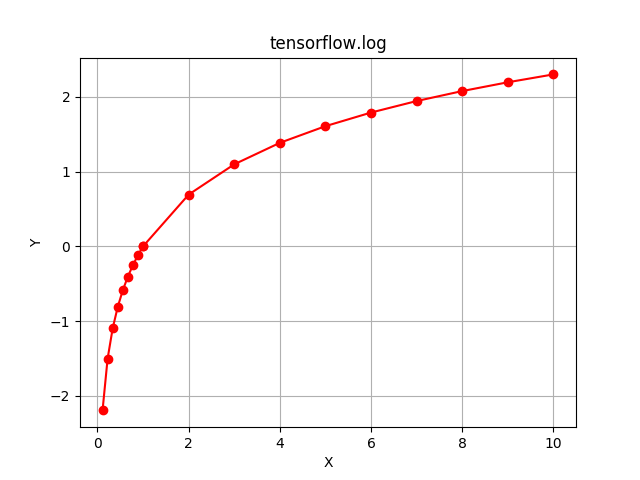Python | Tensorflow log() method
Last Updated :
13 Dec, 2021
Tensorflow is an open-source machine learning library developed by Google. One of its applications is to develop deep neural networks.
The module tensorflow.math provides support for many basic mathematical operations. Function tf.log() [alias tf.math.log] provides support for the natural logarithmic function in Tensorflow. It expects the input in form of complex numbers as  or floating point numbers. The input type is tensor and if the input contains more than one element, an element-wise logarithm is computed,
or floating point numbers. The input type is tensor and if the input contains more than one element, an element-wise logarithm is computed,  .
.
Syntax: tf.log(x, name=None) or tf.math.log(x, name=None)
Parameters:
x: A Tensor of type bfloat16, half, float32, float64, complex64 or complex128.
name (optional): The name for the operation.
Return type: A Tensor with the same size and type as that of x.
Code #1:
Python3
import tensorflow as tf
a = tf.constant([-0.5, -0.1, 0, 0.1, 0.5], dtype = tf.float32)
b = tf.log(a, name ='log')
with tf.Session() as sess:
print('Input type:', a)
print('Input:', sess.run(a))
print('Return type:', b)
print('Output:', sess.run(b))
|
Output:
Input type: Tensor("Const:0", shape=(5, ), dtype=float32)
Input: [-0.5 -0.1 0. 0.1 0.5]
Return type: Tensor("log:0", shape=(5, ), dtype=float32)
Output: [ nan nan -inf -2.3025851 -0.6931472]
 denotes that natural logarithm doesn’t exist for negative values and
denotes that natural logarithm doesn’t exist for negative values and  denotes that it approaches to negative infinity as the input approaches zero.
denotes that it approaches to negative infinity as the input approaches zero.
Code #2: Visualization
Python3
import tensorflow as tf
import numpy as np
import matplotlib.pyplot as plt
a = np.append(np.linspace(0, 1, 10), np.linspace(1, 10, 10))
b = tf.log(a, name ='log')
with tf.Session() as sess:
print('Input:', a)
print('Output:', sess.run(b))
plt.plot(a, sess.run(b), color = 'red', marker = "o")
plt.title("tensorflow.abs")
plt.xlabel("X")
plt.ylabel("Y")
plt.grid()
plt.show()
|
Output:
Input: [ 0. 0.11111111 0.22222222 0.33333333 0.44444444 0.55555556
0.66666667 0.77777778 0.88888889 1. 1. 2.
3. 4. 5. 6. 7. 8.
9. 10. ]
Output: [ -inf -2.19722458 -1.5040774 -1.09861229 -0.81093022 -0.58778666
-0.40546511 -0.25131443 -0.11778304 0. 0. 0.69314718
1.09861229 1.38629436 1.60943791 1.79175947 1.94591015 2.07944154
2.19722458 2.30258509]

Like Article
Suggest improvement
Share your thoughts in the comments
Please Login to comment...